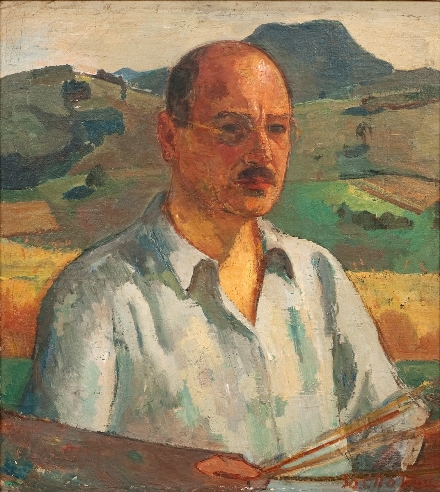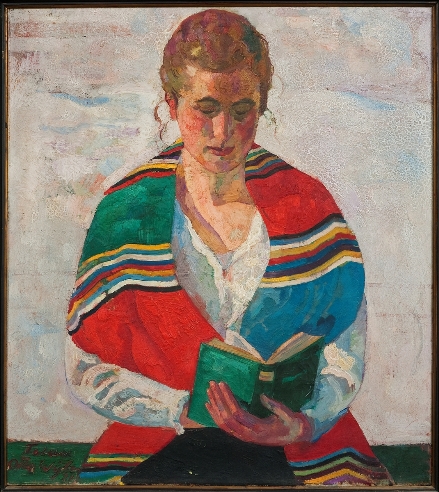
Carlo Mettauer Photo credit: Fotoatelier Brigitt Lattmann
Paintings by Otto Wyler (1887-1965), a Swiss-Jewish artist are showing at the Museum of Art Ein Herod in the rural heartland of Israel. How did this coupling come about? As curator Dvora Liss explains in her text to the catalog, this museum’s aim, aside from showing contemporary art, has always been the ingathering and display of works by as many Jewish artists as possible. So, this exhibition, the first at the Museum to feature a Swiss painter, is in line with this mission.
Wyler was born and raised in the picturesque town of Aarau at the southern foot of the Jura Mountains, west of Zurich. After high school, he left home to study in Paris at the Ecole des Beaux Arts. Later, he would travel widely through Europe, as well as visiting Morocco and Israel, but Aarau remained his home. And, it is this city, its streets and houses and the surrounding landscape – river, mountain and green fields- depicted at different seasons in the year, that feature prominently in the paintings assembled for this exhibition.

Also on display are a number of portraits. One, loaned from the City’s archives and dating from 1956 is of the Mayor of Aarau. Another, one of the best works on view, shows Wyler’s wife Betty reading, a colorful shawl thrown over her shoulders. Also worthy of note are two canvases showing the children of the city taking part in the May Procession (Jugendfest). Only one painting, the interior of a synagogue, connects to Wyler’s Jewish identity.
In general, his style of painting was eclectic. Some works are inspired by specific artists like Cezanne and Monet, others by movements like the Fauves that explore the expressive possibilities of color. The quality varies considerably. But there is no doubt that Wyler was a true professional, in the way that he balanced his palette, applied his paint and organized his compositions.
Attending the opening of this exhibition last week, were Wyler’s daughter, Zimira Wyler Sprecher, grandsons, and other family members.
Museum of Art, Ein Harod Till April 3, 2013





